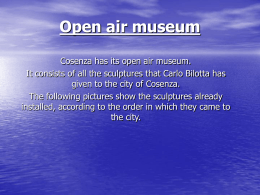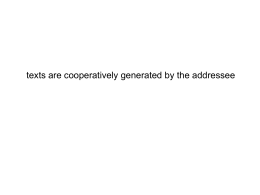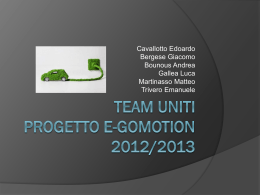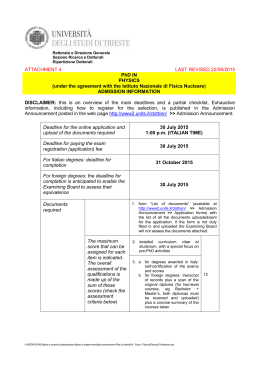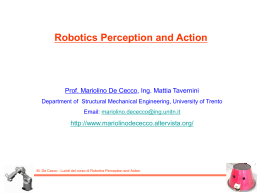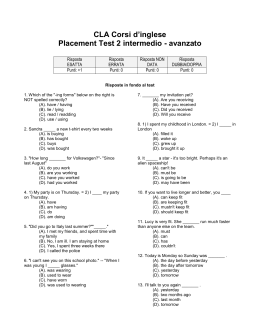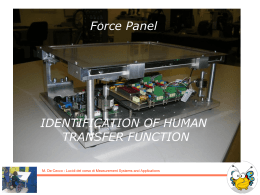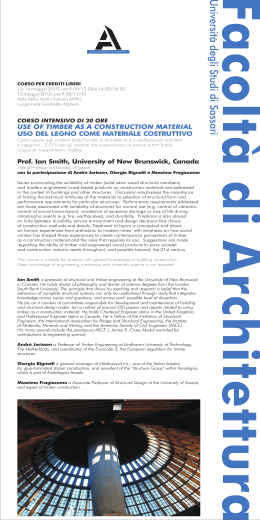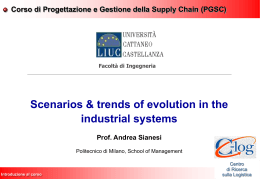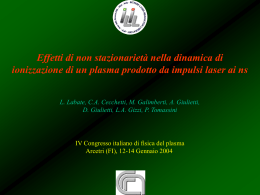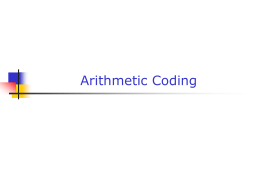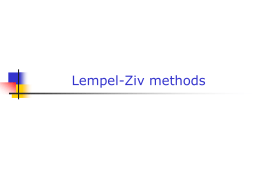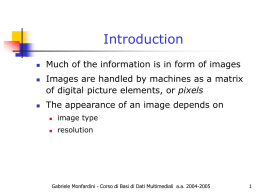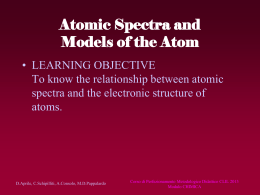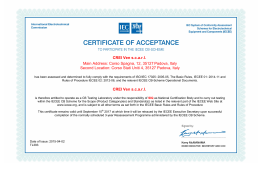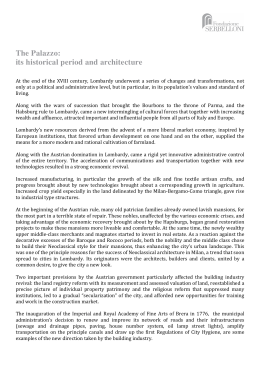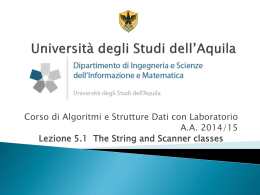Fisica 1 per Biotecnologie Introduzione Lun h 10:30 Mer h 10:30 Gio h 10:30 Alessandro De Angelis E-mail [email protected] Ricevo il mercoledì, 8:30-9:30 1 MAGIC Telescopio Nazionale Galileo La Palma, IAC 28° North, 18° West Grantecan MAGIC MAGIC and its Control House MAGIC 2 www.fisica.uniud.it/~deangeli/biotec Obiettivi: Scopo del corso è di fornire gli elementi di base della fisica generale. Struttura: Il corso si svolge nel I periodo del I anno, con 22 lezioni distribuite in tre unità di 90 minuti ogni settimana. Nella pagina Web del corso e' pubblicata una versione aggiornata della struttura dettagliata delle lezioni (vedi tabella a pie' di pagina). Programma: Unità di misura. Cinematica. Forze in natura: gravitazione, elettromagnetismo. Dinamica. Energia. Oscillazioni; cenni sul moto ondulatorio e sulle onde elettromagnetiche. Testo: Serway e Jewett - Principi di Fisica vol. 1, ultima edizione, EdiSES; appunti di lezione (che non sostituiscono il testo). Gli appunti di lezione e una selezione dei compiti degli anni precedenti sono reperibili nel sito del materiale didattico. 3 www.fisica.uniud.it/~deangeli/biotec Titolare: Il titolare del corso si chiama Alessandro De Angelis. Riceve nell'orario riportato su SINDY, o su appuntamento scrivendo a [email protected]. Melisa Rossi contribuisce al corso. Valutazione: Nella sessione d'esame (due appelli) che segue il corso il voto proposto e' dato dal voto di un accertamento finale (valutato fino a 30 punti) cui viene aggiunto un bonus da 0 a 6 punti basato sulla valutazione dei compiti per casa. Lo studente che abbia superato la prova riportando un voto complessivo non inferiore a 18/30 supera l'esame. Nelle sessioni successive (un appello a Luglio e uno a Settembre) l'esame consta di una prova scritta che include domande di teoria, o di un orale che include esercizi. Consigli: Procurarsi il libro di testo ben prima dell'inizio del corso, magari sfogliarlo quando non si sa che fare... Dare un'occhiata agli argomenti della lezione successiva (il programma lezione per lezione e' dettagliato nella pagina Web del corso) Studiare regolarmente ogni giorno quanto svolto in classe e svolgere gli esercizi relativi. 4 (…) 5 About Physics Provides a quantitative understanding of phenomena occurring in our universe Based on experimental observations and mathematical analysis Used to develop theories that explain the phenomena being studied and that relate to other established theories 6 What is Physics? Model Building A model is a simplified substitution for the real problem that allows us to solve the problem in a relatively simple way Make predictions about the behavior of the system The predictions will be based on interactions among the components and/or Based on the interactions between the components and the environment As long as the predictions of the model agree with the actual behavior of the real system, the model is valid 7 Particle Model The particle model allows the replacement of an extended object with a particle which has mass, but zero size Two conditions for using the particle model are The size of the actual object is of no consequence in the analysis of its motion Any internal processes occurring in the object are of no consequence in the analysis of its motion 8 Theory and Experiments Should complement each other When a discrepancy occurs, theory may be modified Theory may apply to limited conditions Example: Newtonian Mechanics is confined to objects traveling slowly with respect to the speed of light Used to try to develop a more general theory 9 Standards of Quantities SI – Système International The system used in this course Consists of a system of definitions and standards to describe fundamental physical quantities 10 Time: second, s Historically defined as 1/86400 of a solar day Now defined in terms of the oscillation of radiation from a cesium atom Some approximate time intervals, in s Age of the Universe Since the fall of Roman Empire Your age One year One lecture Time between two heartbeats 5 1017 5 1012 6 108 p 107 5 103 1 11 Length: meter, m The “human-scale” definition: 1/10000000 of the distance between the North Pole and the equator, through Paris Length is now defined as the distance traveled by light in a vacuum during a given time (~1/3 10-8 s) See table 1.1 for some examples of lengths 12 Mass: kilogram, kg The mass of a specific cylinder kept somewhere in Paris See table 1.2 for masses of various objects 13 Number Notation Separation between units and decimals: dot (.) When writing out numbers with many digits, spacing in groups of three will be used No commas, no dots Examples: 25 100 5.123 456 789 12 14 Reasonableness of Results When solving problem, you need to check your answer to see if it seems reasonable How many molecules in a liter of milk? Reviewing the tables of approximate values for length, mass, and time will help you test for reasonableness 15 Systems of Measurements, SI Summary SI System Almost universally used in science and industry Length is measured in meters (m) Time is measured in seconds (s) Mass is measured in kilograms (kg) IT’S A LAW 16 Prefixes Prefixes correspond to powers of 10 Each prefix has a specific name Each prefix has a specific abbreviation The prefixes can be used with any base units They are multipliers of the base unit Examples: 1 mm = 10-3 m 1 mg = 10-3 g 17 Fundamental & Derived Quantities In mechanics, three fundamental quantities are used Length Mass Time Will also use derived quantities These are other quantities that can be expressed as a mathematical combination of fundamental quantities Density is an example of a derived quantity; It is defined as mass per unit volume Units are kg/m3 m V 18 Dimensional Analysis Technique to check the correctness of an equation or to assist in deriving an equation. Dimension has a specific meaning – it denotes the physical nature of a quantity Dimensions (length, mass, time, combinations) can be treated as algebraic quantities Both sides of equation must have the same dimensions Dimensions are denoted with square brackets Add, subtract, multiply, divide Length – [L] Mass – [M] Time – [T] Cannot give numerical factors: this is its limitation 19 Dimensional Analysis, example Given the equation: x = 1/2 a t2 Check dimensions on each side: [ L] [ L] 2 [T 2 ] [ L] [T ] The T2’s cancel, leaving L for the dimensions of each side The equation is dimensionally correct There are no dimensions for the constant 20 Conversion of Units When units are not consistent, you may need to convert to appropriate ones Units can be treated like algebraic quantities that can cancel each other out Always include units for every quantity, you can carry the units through the entire calculation Multiply original value by a ratio equal to one The ratio is called a conversion factor Example 10 m/s ? km/h 1km 3600s 10 m/s 36 km/h 1000m 1h 21 Order of Magnitude Approximation based on a number of assumptions May need to modify assumptions if more precise results are needed Order of magnitude is the power of 10 that applies In order of magnitude calculations, the results are reliable to within about a factor of 10 22 Uncertainty in Measurements There is uncertainty in every measurement, this uncertainty carries over through the calculations Need a technique to account for this uncertainty We will use rules for significant figures to approximate the uncertainty in results of calculations 23 Significant Figures A significant figure is one that is reliably known Zeros may or may not be significant Those used to position the decimal point are not significant To remove ambiguity, use scientific notation In a measurement, the significant figures include the first estimated digit 0.0075 m has 2 significant figures 10.0 m has 3 significant figures The leading zeroes are placeholders only Can write in scientific notation to show more clearly: 7.5 x 10-3 m for 2 significant figures The decimal point gives information about the reliability of the measurement 1500 m is ambiguous Use 1.5 x 103 m for 2 significant figures Use 1.50 x 103 m for 3 significant figures Use 1.500 x 103 m for 4 significant figures 24 Operations with Significant Figures When multiplying or dividing, the number of significant figures in the final answer is the same as the number of significant figures in the quantity having the lowest number of significant figures. Example: 25.57 m x 2.45 m = 62.6 m2 The 2.45 m limits your result to 3 significant figures When adding or subtracting, the number of decimal places in the result should equal the smallest number of decimal places in any term in the sum. Example: 135 cm + 3.25 cm = 138 cm The 135 cm limits your answer to the units decimal value 25 Rounding Last retained digit is increased by 1 if the last digit dropped is 5 or above Last retained digit is remains as it is if the last digit dropped is less than 5 Saving rounding until the final result will help eliminate accumulation of errors 26 Coordinate Systems Used to describe the position of a point in space Coordinate system consists of A fixed reference point called the origin Specific axes with scales and labels Instructions on how to label a point relative to the origin and the axes 27 Cartesian Coordinate System Also called rectangular coordinate system x- and y- axes intersect at the origin Points are labeled (x,y) 3 coordinates (x,y,z) are enough to define the position of a particle in space 28 Polar Coordinate System Origin and reference line are noted Point is distance r from the origin in the direction of angle , ccw from reference line Points are labeled (r,) 29 Polar to Cartesian Coordinates Based on forming a right triangle from r and x = r cos y = r sin Cartesian to Polar r is the hypotenuse and an angle y tan x r x2 y2 30
Scarica
